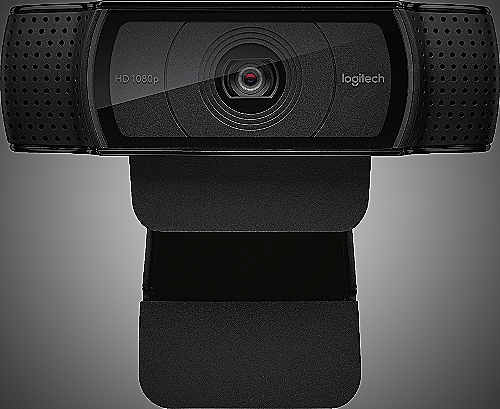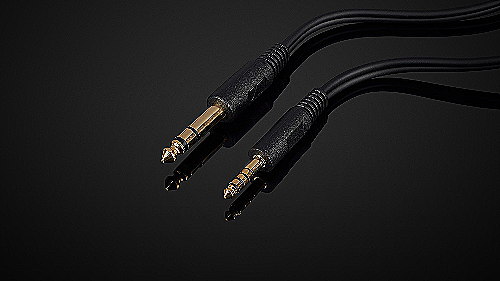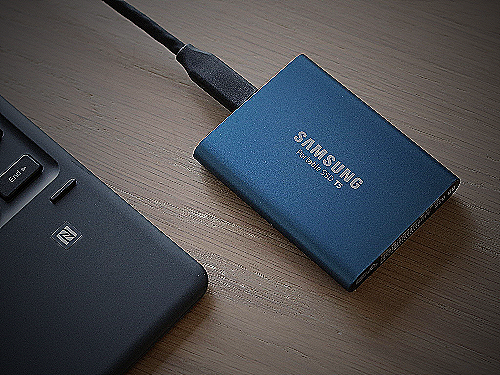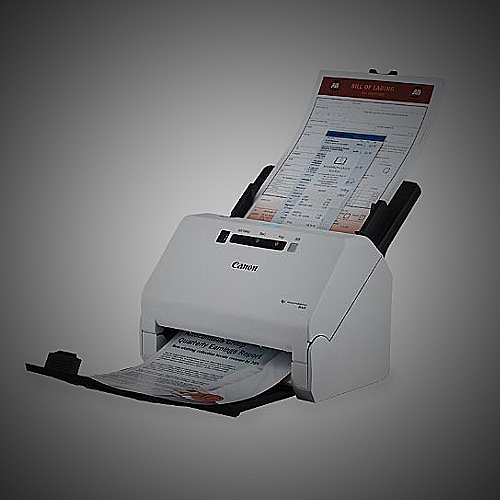Reliability Of Audit Evidence Examples: Key Considerations


Audit evidence is the information collected by auditors to review a company’s financial transactions, internal controls, and other essential items necessary for the certification of financial statements. The reliability of audit evidence depends on the nature and source of the evidence and the circumstances under which it is obtained.
For example, evidence obtained from a knowledgeable source that is independent of the company is more reliable than evidence obtained only from internal company sources.
The importance of reliable audit evidence cannot be overstated, as it ensures that the financial information under examination is accurate and unbiased. Auditors must rely on reliable sources and methods to gather evidence, such as analyzing accounting records and financial reporting systems.
The persuasiveness of audit evidence plays a critical role in the credibility and reliability of audit findings, particularly in the context of financial statements, internal controls, and disclosures.
Check out this Youtube video: “SA 500 Types of Audit Evidence and Reliability of … – YouTube” to learn about real-life examples of audit evidence reliability and how it can impact the audit process.
Understanding Audit Evidence
Definition and types of audit evidence
Auditing evidence refers to the information collected for the review of a company’s financial transactions and internal control practices. It includes various types such as documentation, records, and events used by auditors to form opinions on financial statements.
The role of audit evidence in the audit process
The role of audit evidence in the audit process is crucial as it supports and corroborates management’s assertions regarding financial statements or internal controls. It provides the necessary information for the certification of financial statements as being fairly represented.
The concept of reliability in audit evidence
The reliability of audit evidence depends on the nature and source of the evidence and the circumstances under which it is obtained. For instance, evidence obtained from knowledgeable and independent sources is generally more reliable than evidence obtained solely from internal company sources.
| Type of Audit Evidence | Reliability |
|---|---|
| Documentation | High |
| Physical Observations | High |
| Conflicting | Low |
Remember, while drawing conclusions from audit evidence, it is essential to ensure that it is both relevant and reliable in supporting the auditor’s opinion.
These responses should give a better understanding of audit evidence, its types, the significance of audit evidence in the audit process, and the concept of reliability.
Factors Affecting Reliability of Audit Evidence
Nature and source of evidence
The nature and source of evidence play a crucial role in its reliability. For example, financial statements directly from a company’s accounting system are more reliable than unaudited information from management.
Objectivity and independence of the evidence
The objectivity and independence of the evidence are critical factors. For instance, evidence provided by a neutral third party, such as a bank statement or a confirmation from a third-party vendor, is more reliable than evidence provided by internal sources with potential biases.
Timeliness of the evidence
The timeliness of evidence also affects its reliability. For example, recent bank statements or real-time transaction records hold higher reliability compared to older data that may be subject to changes or manipulation.
| Factor | Example |
|---|---|
| Nature and source of evidence | Financial statements directly from the |
| company’s accounting system. | |
| Objectivity and independence | Evidence provided by a neutral third |
| party, such as a bank statement. | |
| Timeliness of the evidence | Recent bank statements or real-time |
| transaction records. |
Types of Audit Evidence
Documentary evidence
Documentary evidence, a crucial type of audit evidence, encompasses records and tangible documents used for verification. These documents can include ledgers, journals, invoices, contracts, and financial statements from the accounting information system of the entity.
For instance, invoices can serve as documentary evidence to validate the occurrence of transactions.
Physical evidence
Physical evidence in auditing involves the direct inspection of tangible assets such as inventory, machinery, or documents to verify their existence, condition, or ownership. For example, physically examining inventory or machinery on-site provides direct evidence supporting audit assertions about their existence and valuation.
Analytical evidence
Analytical procedures comprise the use of analysis to identify trends or discrepancies that can aid auditors in detecting changes in financial information. This may involve comparing financial ratios or conducting variance analyses to pinpoint irregularities or potential risks.
Testimonial evidence
Testimonial evidence encompasses the information provided by individuals in the form of statements, interviews, or confirmations. This can involve obtaining confirmations from third parties such as banks, customers, or suppliers to corroborate financial transactions, balances, or other relevant information.
| Type of Audit Evidence | Description |
|---|---|
| Documentary Evidence | Records and tangible documents used for verification, e.g., invoices validating transactions. |
| Physical Evidence | Direct inspection of tangible assets like inventory and machinery to validate their existence and condition. |
| Analytical Evidence | Use of analyses to identify trends or discrepancies in financial information. |
| Testimonial Evidence | Information provided by individuals in the form of statements or confirmations from third parties. |
These types of audit evidence play a vital role in ensuring the reliability and validity of the audit process, enabling auditors to draw well-informed conclusions and provide assurance to stakeholders.
Remember, the correctness and reliability of your evidence can make or break the success of your audit process!
Methods of Obtaining Reliable Audit Evidence
Observation
Observation can provide audit evidence about the performance of a process or procedure. However, its reliability is limited to the specific point in time of the observation.
Additionally, it’s crucial to recognize that the act of being observed may influence how the process or procedure is carried out.
Inquiry
Inquiry involves obtaining information from knowledgeable parties within the organization. While this can yield valuable audit evidence, it’s important to note that the reliability of this evidence depends on the competence and responsiveness of the individuals providing the information.
Inspection
Inspection of records and documents is another method to gather reliable audit evidence. The degree of reliability varies based on the nature and source of the records, as well as the effectiveness of controls over their production.
Confirmation
Confirmation represents a formal correspondence with a third party to verify information or balances. This is a highly reliable method of obtaining audit evidence as it involves direct communication with external sources.
| Method | Reliability |
|---|---|
| Observation | Limited |
| Inquiry | Dependent |
| Inspection | Varied |
| Confirmation | Highly reliable |
Reliability of electronic data as Audit Evidence
When it comes to electronic data as audit evidence, there are risks and challenges that auditors must navigate. One of the primary risks is the potential for data alteration, which can significantly impact its credibility and value.
Additionally, the volume of electronic data accumulated by businesses poses a challenge for auditors, making it essential to ensure the reliability of such data.
Risks and challenges in using electronic data
Using electronic data for audits presents the risk of encountering unavailable or missing evidence, which may not align with the entity’s record retention practices or policies. Furthermore, the inability to produce evidence of key systems poses a significant challenge in leveraging electronic data as reliable audit evidence.
Methods to ensure the reliability of electronic data
To ensure the reliability of electronic data, auditors can implement measures such as evaluating internal controls, including information system controls. This involves establishing control activities through policies and procedures, aimed at achieving objectives and mitigating risks associated with electronic data.
Additionally, auditors can leverage data analysis software and employ techniques to assess the consistency and credibility of electronic evidence.
Evaluating the Reliability of Audit Evidence Examples
Factors to consider in evaluating reliability
-
Nature and Source: Evidence obtained from independent and knowledgeable sources is generally more reliable than solely internal company sources.
-
External Information: Factors affecting the auditor’s evaluation of the reliability of external information include inspection for records, analyzing aged accounts receivable, and inconsistencies in or doubts about the reliability of audit evidence.
-
Audit Evidence Standard: Audit evidence should be evaluated based on its sufficiency and appropriateness, considering the design of audit procedures used to test assertions or controls.
Techniques to assess the reliability of evidence
| Techniques | Description |
|---|---|
| Physical Examination | Direct examination of tangible assets, such as inventory or property, to verify their existence. |
| Confirmations | Verbal or written responses from third parties to verify the accuracy of transactions. |
| Documentation | Reviewing documents such as contracts, invoices, or financial statements for authenticity. |
| Analytical Procedures | Utilizing financial and non-financial data to identify trends, risks, or anomalies. |
| Inquiries of the Client | Seeking information from the company’s management or personnel to clarify or confirm details. |
| Reperformance | Independently redoing a procedure that was initially performed by the client or third parties. |
| Observation | Actively observing processes, activities, or behaviors to assess compliance or performance. |
These techniques help auditors obtain valid and relevant audit evidence to support their conclusions and opinions while ensuring the accuracy and reliability of the information they use.
Examples of Reliable Audit Evidence
-
Bank statements: These provide a clear record of financial transactions, including deposits, withdrawals, and interest earned. They offer concrete evidence of the organization’s financial health and transactions.
-
Invoices: Invoices serve as evidence of transactions and financial obligations. They detail the products or services provided, their costs, and payment terms. Analyzing invoices can reveal the company’s revenue and spending patterns.
-
Contracts and agreements: These legal documents outline the terms and conditions agreed upon by parties involved. They provide concrete evidence of commitments, rights, and obligations, ensuring accountability and legal compliance.
-
Inventory records and logs: These documents track the flow of goods, materials, and supplies within the organization. They provide evidence of inventory levels, purchases, and usage, offering insight into the company’s operational efficiency.
Case Studies on Reliability of Audit Evidence
High-profile audit cases
Some of the high-profile audit cases showcasing reliability issues include Carillion’s misrepresentation of figures, KPMG’s auditing failures, and The Kraft Heinz Company’s inflated financial reports. These cases highlight the significance of ensuring the trustworthiness of audit evidence in financial reporting.
Lessons learned from audit failures
Audit failures have taught us vital lessons, emphasizing the need for increased vigilance in identifying errors and discrepancies. Internal audits play a crucial role in error discovery, and auditors must not be paralyzed by fear of failure but instead innovate to drive greatness.
Best practices in ensuring reliable audit evidence
When collecting audit evidence, utilizing a variety of methods such as interviews, observations, document reviews, tests, and measurements is essential. The sufficiency and appropriateness of audit evidence should be carefully considered to ensure its relevance and reliability in providing support and detecting misstatements.
Reliability of Audit Evidence in Different Industries
Examples from the financial sector
| Type of Evidence | Example |
|---|---|
| Bank Accounts | The reconciliation of bank statements with accounting records demonstrates reliable audit evidence. |
| Invoices | Verified invoices from reputable vendors provide trustworthy evidence in the financial sector audit. |
Examples from the healthcare industry
| Type of Evidence | Example |
|---|---|
| Clinical Outcomes | Measuring patient outcomes against evidence-based medicine standards is a valuable source of audit evidence in healthcare. |
| Internal Controls | Assessing healthcare professionals’ compliance with standards and quality control tests provides reliable evidence for healthcare industry audits. |
Examples from the manufacturing sector
| Type of Evidence | Example |
|---|---|
| Production Batches | Regular quality control tests on manufacturing production batches to ensure compliance with standards offer dependable evidence for audits. |
| Supplier Capability | Manufacturing factory audits focus on verifying a supplier’s ability to produce products that meet specified standards, addressing disruptions and preventing costly disruptions post-production. |
When conducting audits in different industries, the reliability of evidence is crucial for ensuring accurate assessment and decision-making. The financial sector relies on bank accounts and invoices as dependable evidence, while the healthcare industry examines clinical outcomes and internal controls.
In the manufacturing sector, evidence from production batches and supplier capability audits is essential. By understanding these specific examples, auditors can effectively gauge the reliability of audit evidence across diverse industries.
Importance of Independence and Objectivity in Audit Evidence
The impact of bias on the reliability of evidence is substantial, as any form of bias can skew the integrity of the audit process. Whether it’s cognitive bias affecting decision-making or confirmation bias influencing data interpretation, these biases can compromise the accuracy and trustworthiness of the evidence obtained.
The importance of independence in gathering evidence cannot be overstated. When auditors maintain independence, they can objectively assess information without being influenced by external pressures or conflicting interests.
This ensures that the evidence collected is reliable, unbiased, and truly reflective of the audited entity’s operations.
Limitations and Challenges in Ensuring Reliable Audit Evidence
Inherent limitations of evidence
Inherent limitations in audit evidence stem from the subjective nature of judgment in financial reporting, leading to the inability for auditors to obtain absolute assurance. These limitations are primarily due to the persuasive rather than conclusive nature of audit evidence, thus providing reasonable assurance but not absolute certainty.
Challenges in obtaining and evaluating evidence
Obtaining and evaluating audit evidence pose significant challenges, particularly with the reliability and competence of the individuals providing the evidence. The reliance on management representations, external experts, or internal staff for evidence may be compromised by potential bias, intentional misrepresentation, or lack of expertise, thereby impacting the reliability of the evidence obtained.
| Challenges in Obtaining and Evaluating Evidence |
|---|
| Inherent limitations due to the subjective nature of judgment in financial reporting. |
| Challenges in obtaining reliable evidence from management representations, external experts, or internal staff. |
Statistical Analysis in Assessing Audit Evidence
Use of statistical techniques in evaluating evidence
Statistical techniques play a crucial role in evaluating audit evidence by providing a scientific approach to assess the reliability and validity of the data obtained. Through the application of statistical methods, auditors can analyze large sets of financial information, identifying outliers, patterns, and discrepancies with greater accuracy.
This helps in uncovering potential fraud, errors, or irregularities, contributing to the overall assessment of the financial statements.
Examples of statistical methods used in auditing
-
Audit Sampling: This involves the use of random sampling techniques to select items for verification, allowing auditors to draw conclusions about an entire population based on a representative sample.
-
Data Analytics: Auditors leverage statistical data analysis to gain deep insights into financial data, identify trends, and assess risk, enabling them to detect anomalies and perform more frequent testing.
-
Statistical Models and Analysis: Auditors utilize statistical models to quantify risks of material misstatement and assess the quality and appropriateness of audit evidence obtained.
-
Reliability Assessment: Auditors apply statistical techniques to assess the reliability of data used for audits, ensuring compliance with auditing standards and providing a more comprehensive view of the entity and its systems.
| Statistical Methods | Application in Auditing |
|---|---|
| Audit Sampling | Random sample selection |
| Data Analytics | Financial insights |
| Statistical Models | Risk assessment |
| Reliability Assessment | Compliance verification |
Technology and Innovations in Ensuring Reliable Audit Evidence
Role of technology in gathering and assessing evidence
Technology plays a pivotal role in the collection and evaluation of audit evidence by enabling auditors to employ advanced data analytics, artificial intelligence, and machine learning. These technologies empower auditors to access and analyze vast amounts of data rapidly, leading to more thorough and precise risk assessments, as well as the ability to design and execute more effective audit procedures.
Examples of innovative tools for ensuring reliability
Innovative tools such as software for data analytics, artificial intelligence, and drones are revolutionizing the audit process. For instance, these tools facilitate the comprehensive analysis of entire data populations, uncovering anomalies, trends, and potential risks.
This enables auditors to enhance the reliability and quality of audit evidence by ensuring a more thorough and in-depth examination of the relevant data, leading to more accurate and reliable audit results.
Ensuring Compliance and Regulatory Requirements in Audit Evidence
When it comes to audit evidence, there are specific regulations aimed at ensuring the reliability and integrity of the audit process. For example, Auditing Standard No. 15 provides clear guidelines on what constitutes audit evidence and sets requirements for the design and performance of audit procedures to obtain sufficient evidence.
In addition, AS 1105 emphasizes the importance of both relevance and reliability in audit evidence to support the conclusions upon which the auditor’s opinion is based.
In the realm of compliance, there are crucial roles in ensuring the reliability of audit evidence. Compliance audits play a pivotal role in confirming the presence and application of controls, while substantive tests verify the integrity of controls and the accuracy of documents.
By adhering to these compliance requirements, organizations can establish the credibility and reliability of their audit findings, ultimately contributing to the overall integrity of the audit process.
| Aspect | Description |
|---|---|
| Importance of Audit Evidence in Compliance | Audit evidence plays a pivotal role in ensuring regulatory adherence and integrity in financial reporting. |
| Compliance Audits | These audits systematically examine organizations’ activities to confirm adherence to legal requirements and internal guidelines. |
Recommended Amazon Products for Ensuring Reliability of Audit Evidence
Here’s a curated list of products that can help you ensure the reliability of audit evidence with ease. These recommendations are based on functionality and positive customer reviews.
1. Ring Alarm 8-Piece Kit
The Ring Alarm 8-Piece Kit is a comprehensive home security system that includes a base station, keypad, contact sensor, motion detector, and range extender. With easy installation and integration with other Ring devices, this kit provides reliable security for homes and offices.


| Pros | Cons |
|---|---|
| Easy to install | Requires a subscription for professional monitoring |
| Integrates with other Ring devices | Limited customization options |
2. Logitech HD Pro Webcam C920
The Logitech HD Pro Webcam C920 is a top-rated webcam that offers high-definition video quality and a reliable built-in microphone for clear audio. It’s compatible with various video conferencing platforms, making it suitable for virtual meetings and interviews.


| Pros | Cons |
|---|---|
| High-quality video and audio | Some compatibility issues with Mac systems |
| Easy to set up and use | Requires a USB port |
3. Sennheiser HD 660 S – HiRes Audiophile Open Back Headphone
The Sennheiser HD 660 S headphones are known for their exceptional sound quality and comfortable fit, making them ideal for professionals who rely on accurate audio monitoring. With open-back design and detachable cable, these headphones offer reliability and premium audio performance.


| Pros | Cons |
|---|---|
| Excellent sound quality | High price point |
| Comfortable for extended use | Open-back design may not suit all environments |
4. Samsung T5 Portable SSD
For reliable data storage and transfer, the Samsung T5 Portable SSD is a compact and durable option. With fast read and write speeds, password protection, and optional hardware encryption, this SSD provides a secure and dependable solution for storing audit evidence files.


| Pros | Cons |
|---|---|
| Fast data transfer speeds | Relatively high cost per gigabyte |
| Compact and durable design | Requires compatible ports for optimal speed |
5. Canon imageFORMULA R40 Office Document Scanner
The Canon imageFORMULA R40 scanner offers reliable document digitization with its fast scanning speed and automatic document feeder. This scanner is suitable for efficiently converting paper-based evidence into digital files for audit purposes.


| Pros | Cons |
|---|---|
| High-speed scanning | Large footprint may not fit in all workspaces |
| Automatic document feeder | Software interface could be more user-friendly |
Top Recommended Product for Ensuring Reliability of Audit Evidence
If you’re looking for the best solution for ensuring the reliability of audit evidence, we highly recommend the Ring Alarm 8-Piece Kit. This comprehensive home security system provides reliable monitoring and easy integration with other devices, making it an essential tool in securing audit evidence.
Ready to improve your audit evidence reliability? Check out the Ring Alarm 8-Piece Kit today for the best results!


Conclusion
It is important for auditors to understand the reliability of audit evidence examples in order to ensure the accuracy and effectiveness of their audit procedures. By recognizing the different types of evidence and their varying degrees of reliability, auditors can make informed decisions about the sufficiency of evidence gathered during the audit process.
Furthermore, understanding the reliability of audit evidence examples can help auditors identify areas of potential risk or fraud within the financial statements. This knowledge allows auditors to focus their efforts on obtaining more reliable evidence in areas of higher risk, ultimately leading to a more thorough and effective audit.
The reliability of audit evidence examples is crucial in providing assurance to stakeholders about the accuracy of financial information. By systematically evaluating the reliability of evidence, auditors can enhance the credibility of their findings and provide valuable insights to clients and stakeholders.









